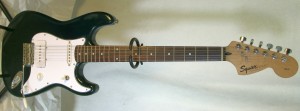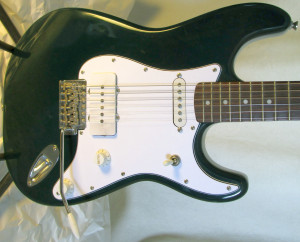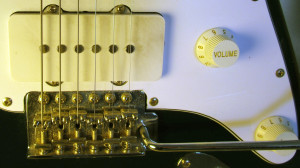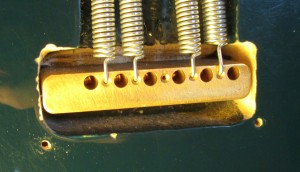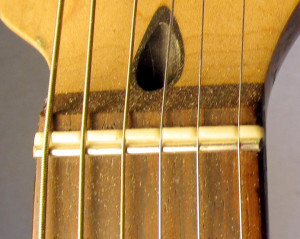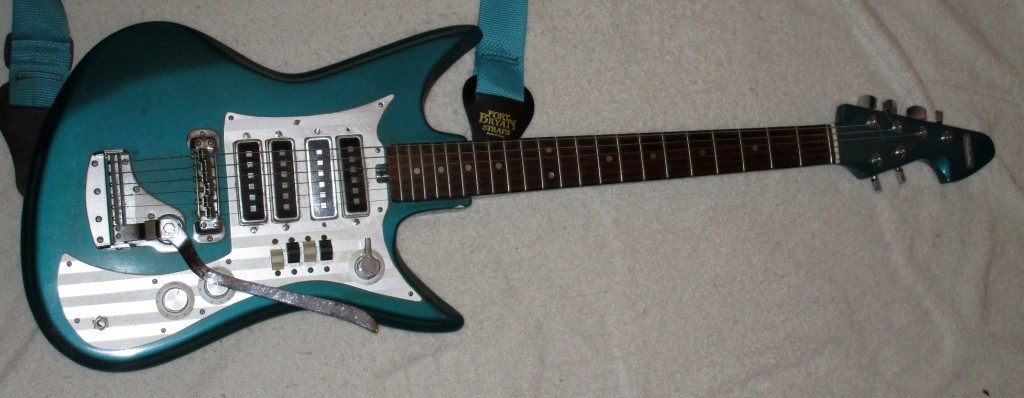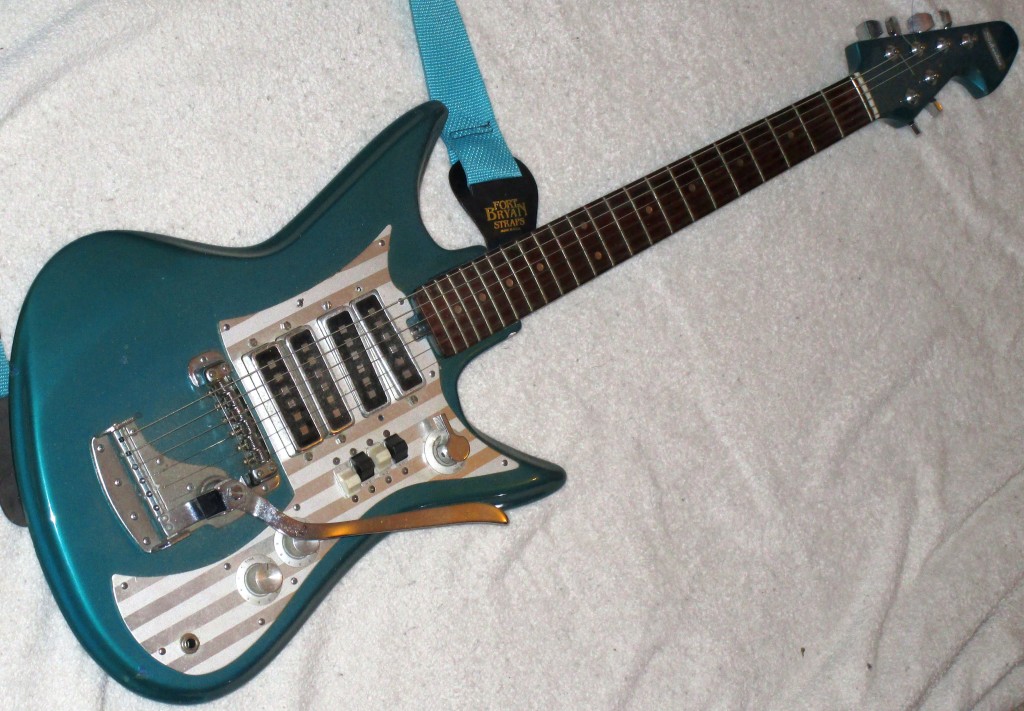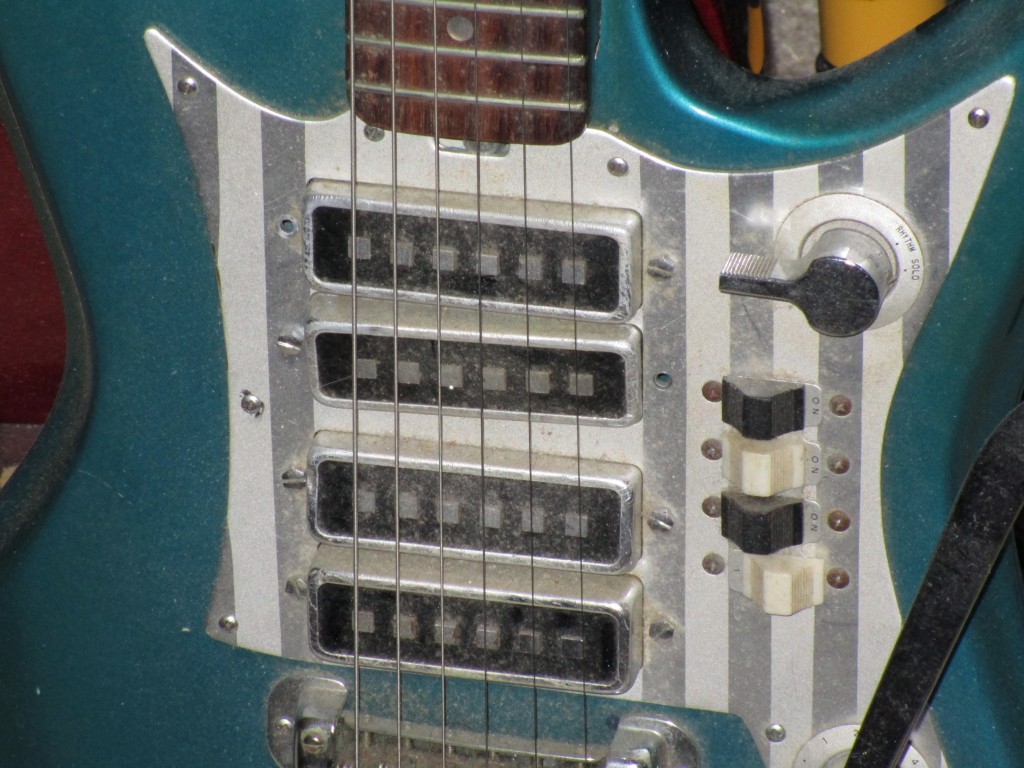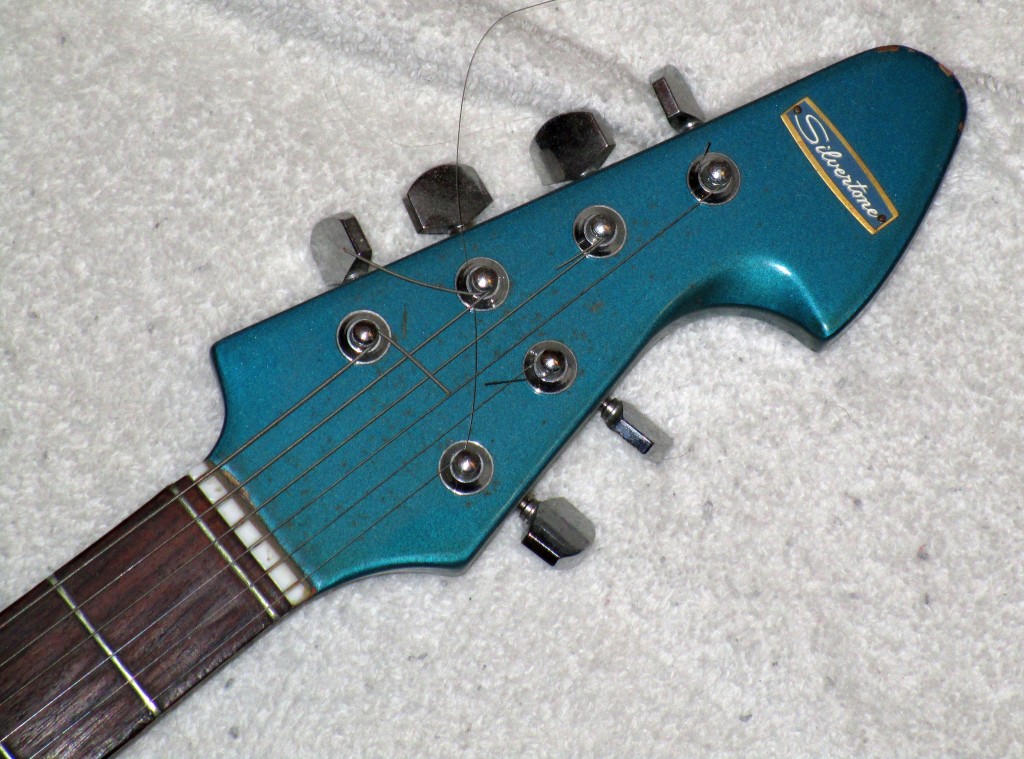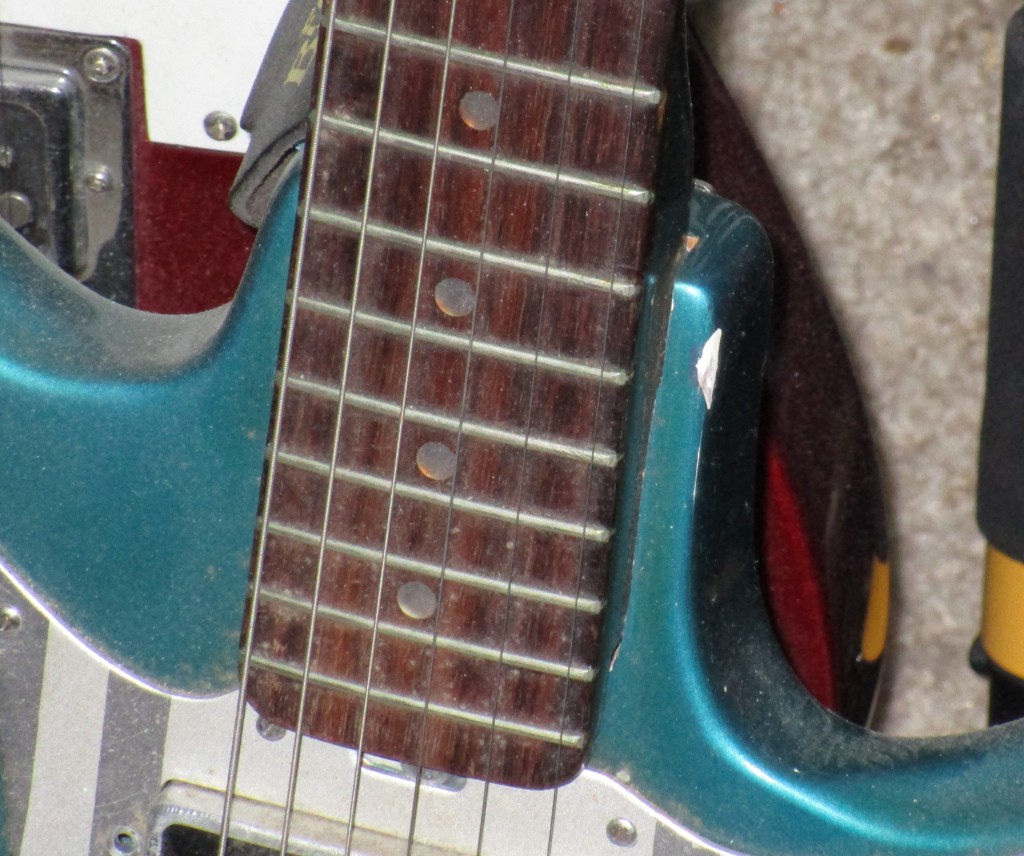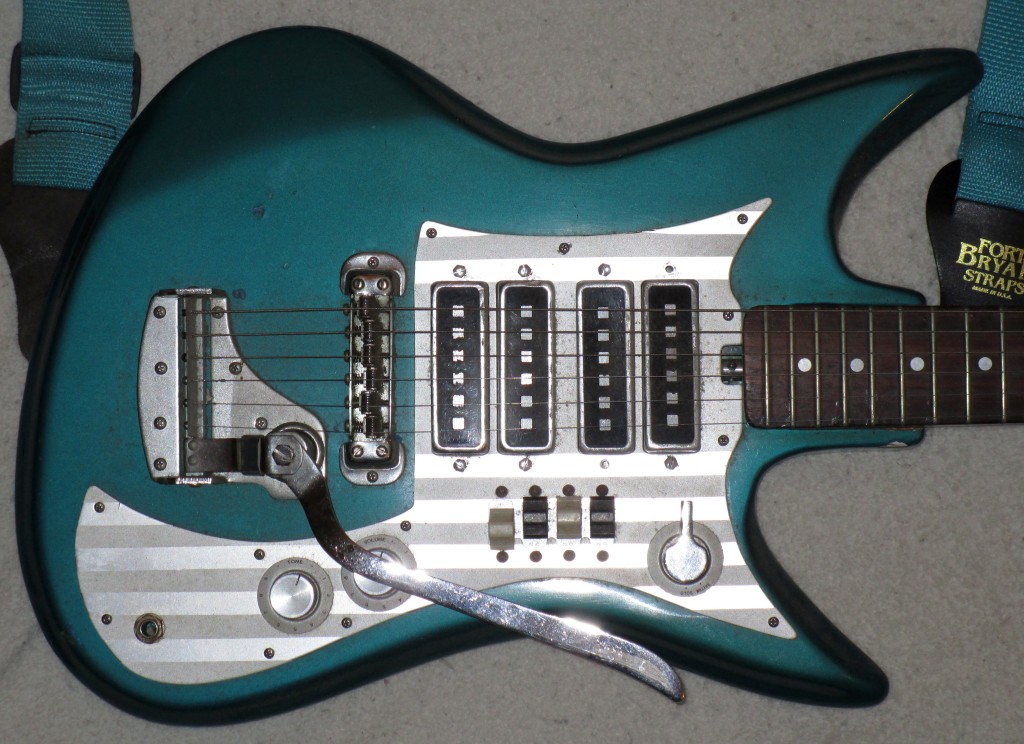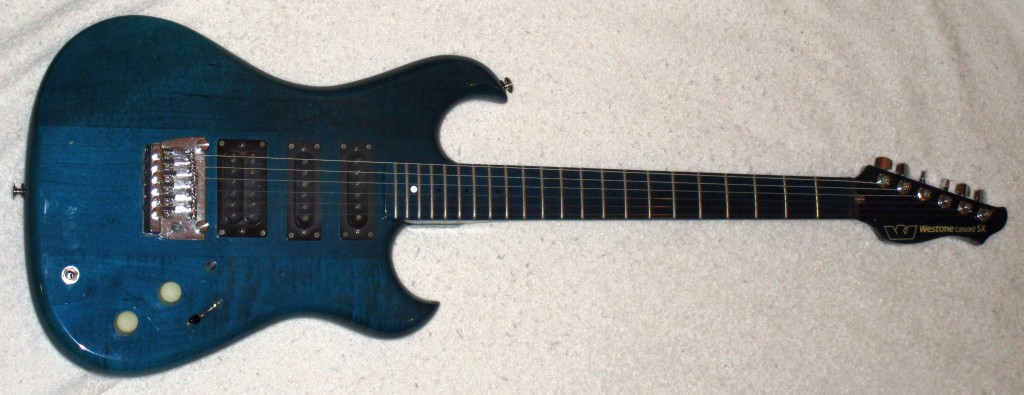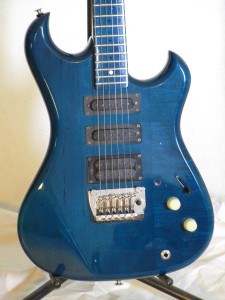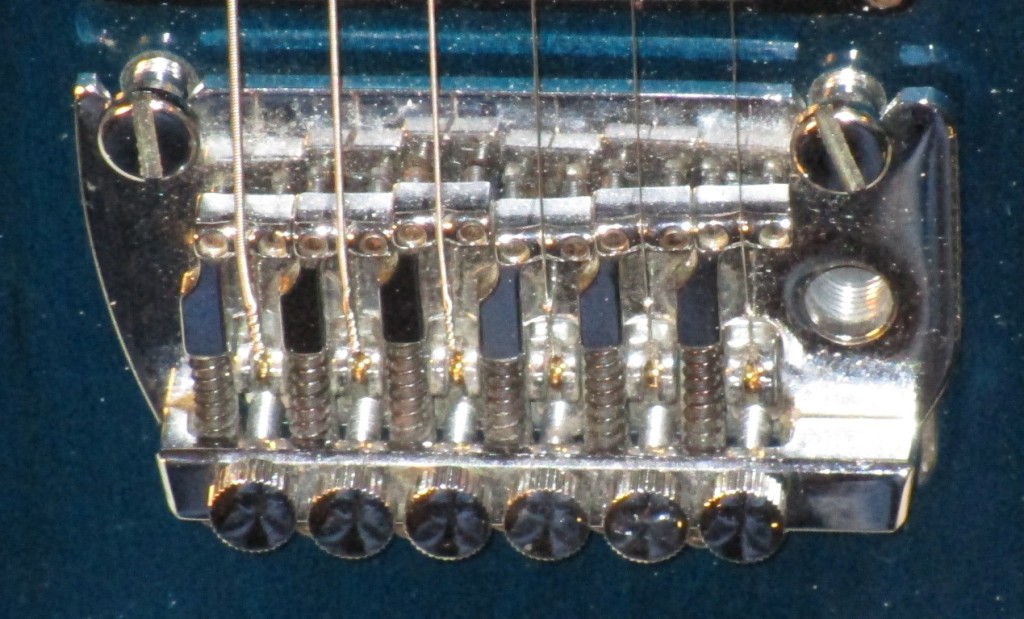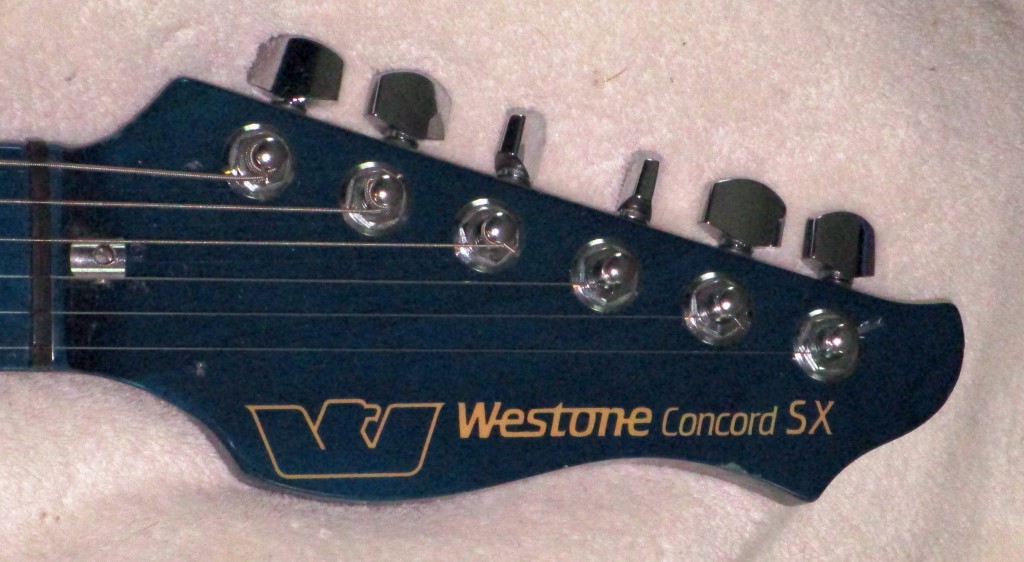I was in a fit of “I’m not gonna pay $1000 for a guitar!” rage when I decided to make this one.
It was late 2013. I had just seen Man or Astro Man live, and I desperately wanted the Star Crunch signature guitar. Sure, Hallmark’s Mosrite copies have an awesome reputation, but I paid $2000 for my last car. Paying $1000 for a guitar when I’m not even in a band just seems stupid. Besides, who really wants somebody else’s signature guitar?
I’d rather make my own “signature guitar” than pay for the privilege of having somebody else’s signature guitar, no matter how good. Is that D.I.Y. or arrogance? Well, in my case, it’s arrogance to be sure, but at least I have the woodworking ability to not make a complete ass of myself.
I love my red 1993 American Standard Strat, but I wanted the sound of a Mosrite. Seems easy enough – stick a Jazzmaster pickup on there, and voila – instant Stratmaster! Route some holes, solder some wires, there you go. But the Jazzmaster pickup is huge. Removing that much wood will compromise the structural integrity of the guitar – that’s probably the reason that the Jazzmaster doesn’t have a Strat style tremolo. Plus, carving out a huge chunk of body will affect the tone. So I decided to mod a Squier instead.
I started with a bog-standard green 2002 Squier Strat. This particular Squier was made by Cort. I got it for $150 at Guitars on George.It’s a typical Squier – fit and finish is OK for a cheap guitar, bridge was OK but made from pot metal, and the pickups stunk.
First, I bought a new tremolo, Jazzmaster “hot” bridge pickup, 3 way “SG” style switch, and a humbucker/single volume knob pickguard came from Guitar Fetish. I routed the pickguard for the new bridge pickup, and also for the original Squier neck pickup. Then I drilled holes for the switch and a tone control. Then I routed the body for the switch and bridge pickup. Everything went smoothly.
Below is a pic of what I did about all the wood I removed. Normally, there is a lot of “dead” space in front of the tremolo. I usually put a block of wood in there to give my tremolo a positive stop. This aids in tuning and also improves sustain. Instead of just gluing a block in there, I glued it in place and then surrounded it with “wood fill” epoxy putty. I doubt it will help, but it can’t hurt. You can also see where I had to enlarge the tremolo hole for the massive Guitar Fetish trem.
It played and sounded great for $250, but I wanted more. I knew that Star Crunch’s guitar has a “zero fret”. I found that Goldtone makes the Zer0 Glide – a zero fret retrofit kit for guitars. $30 seemed like an OK price, so I put one of them on.
I cut the nut slots too wide and it still works. I didn’t notice much of an improvement, but I think that next time I have to replace a nut I’ll try it again. I’d recommend it if you want the benefits of a zero fret. But get the pre-slotted version! (Not sure why I didn’t. Maybe they didn’t offer them then? It was a new product at the time).
Overall, I’m satisfied with how the guitar turned out. Blasting through my Fender Twin, it really does come close to capturing the vibe of Man or Astro Man. But it’s a one trick pony. The distortion tone isn’t all that great. The pickup selector switch isn’t in a very ergonomic position. The neck pickup (which I didn’t replace) still sucks. The Guitar Fetish bridge breaks strings more often than it should. The zero fret helps it stay in tune, but it still goes out after a few songs.
SUMMARY:
Condition: 9/10
– Cosmetics: 9/10 (nothing visible to the audience)
– Working order: 9/10 (switch isn’t in the best spot, but everything works)
Playability: 9/10
– Rhythm Playabiliy: 10/10
– Lead Playability: 8/10
Sound: 8/10
– Bridge: 10/10 (Surfy!)
– Neck: 2/10 (shrill, but who uses the neck pickup for surf?)
I wouldn’t gig with this axe, but it’s great for going deaf while playing “Inside the Atom” at home
